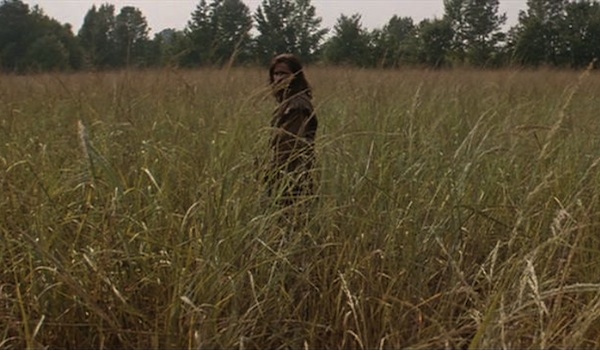Ranking the Films of Terrence Malick

It took me a long time and a lot of viewings to appreciate the Terrence Malick films the way I do today. The first film of his I experienced (and make no mistake, each and every Terrence Malick film is an experience) was The New World, not long after its release on DVD. I shut it off. Too much high grass, maybe.
Of course, my tastes changed. I grew up. I gave it another go in the months leading up to The Tree of Life. I watched a few other Malick films. I caught The Tree of Life just before it left theaters in the summer of 2011, and I’ve revisited it many times since.
And as I write this, it’s been merely hours since I published my review of Malick’s latest: To the Wonder. If you read that post, you know how this ranked list of Malick’s six films will begin. If not, I won’t let my long-winded introduction keep you in suspense any longer. Enjoy the list, and let me know what you think…
6.) To the Wonder
Many are calling it a self-indulgent disaster. Others a secret masterpiece. I’m in the middle. It’s easily the great director’s weakest film, though it isn’t without its pleasures. Both Olga Kurylenko and Rachel McAdams are luminous (and maybe a little vertiginous after all that twirling). It’s also beautiful (to the surprise of absolutely no one). The problem is that it’s a film lacking both a story and characters. And there’s little dialogue to speak of. Instead, we spend nearly two hours with feelings—feelings that walk and talk and interact with other feelings. It’s weird and a little off-putting. It’s also unsurprising coming from someone like Malick. But this is Malick to the extreme, and oddly enough, extreme Malick is quite inert.
5.) Badlands
Badlands is perhaps Malick’s most widely beloved picture, yet it’s one I’m pretty lukewarm about. In my original review, I bemoaned the distance between the characters and the audience. In this mini-capsule, I’ll do the same thing. With two individuals doing such morally repugnant things for virtually no reason, one needs something else to hold on to. And while we at least have the film’s good performances and beautiful cinematography, there really isn’t much that makes us feel involved or invested.
4.) The Thin Red Line
It took 20 years to make this film. It was also Malick’s first foray into Oscar territory (it earned a 1998 Best Picture nomination). As much as I admire it, though, I find it a bit forgettable when put up against his other material (including Badlands, which I clearly find less successful). I think it’s the massive ensemble. The film doesn’t have the same emotional hook as Malick’s other works, perhaps because there are so many people, so many different stories. The Thin Red Line is an endlessly watchable film—something that should be studied by cinephiles everywhere. But it doesn’t elicit much of a reaction out of me, which puts it below Malick’s three best works, all of which just gut me every time I watch them.
3.) The Tree of Life
What a unique entry this was into the 2011 film canon. Among the glut of mediocre blockbusters and traditional Oscar bait was this mirage of a film—something that couldn’t possibly exist in today’s market, nevermind earn Best Picture and Best Director nominations. The Tree of Life is so fascinating to me because a significant portion of the film doesn’t work for me at all. It’s flat out bad as far as I’m concerned. Sean Penn himself wondered aloud to the press what he was doing in the final product (not the first time someone publicly complained about his or her role in a Malick picture). But the rest of the film—from the Creation to family life in Texas—is storytelling in its most ambitious form.
2.) Days of Heaven
I’d argue Days of Heaven is Malick’s most straightforward film, at least as far as plot goes, but there’s so much bubbling beneath the surface that every time I finish watching it, I want to put it back in and start it over. The way the film depicts youth, and both the magic and the mistakes that accompany it, resonates deeply with me. And some of the shots are among the director’s most memorable (the locusts scene is especially strong).
One of Malick’s trademarks, of course, is narration, and Days of Heaven features my favorite narrator in all of film—Linda Manz. The rest of the cast, of course, is great, as well.
1.) The New World
This film haunts me. It’s almost hypnotic to watch. From the establishing shots of the settlers hitting land to the way Malick almost silently develops the love between John Smith and Pocahontas, The New World has a way of both confounding your expectations while also giving you everything you hope to get out of a Terrence Malick production. Yes, I’m on record for saying the final act is a little weak, but I think anyone who told you Malick’s films are perfect would be a little delusional. That said, his messiness (here, and probably in all his films) is simply an expression of his earnestness.
As with many of his characters, these two are troubled souls, and this ultimately ends up my #1 Malick-directed film because their cries for help speak to me most loudly. Their plight feels truest, and the way it’s resolved moves me more than any other resolution. It wasn’t any easy choice to be sure, but The New World is a sensational film, and I’ll proudly defend it as the great Terrence Malick’s finest achievement in filmmaking.













